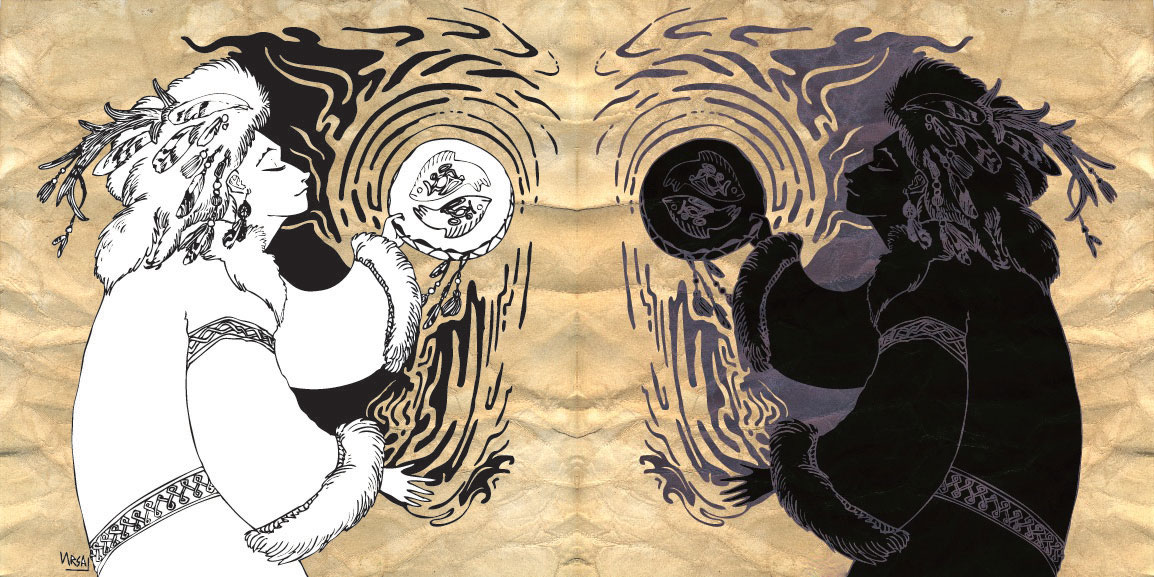Gnosticism was a prominent heretical movement of the early Christian Church [and partly of pre-Christian origin] during the 2nd century (A.D.). This doctrine taught that the world was created and ruled by a lesser god and that Jesus was an emissary of a remote supreme being of whom enabled the redemption of the human spirit. This supreme being is noted for having esoteric knowledge (gnosis). The gnostics shun the material world and embrace the spiritual world.
While this religion does not have any specific founder, the following men are considered ancient Gnostic leaders:
- Simon Magnus - he interpreted the Garden of Eden, the exodus from Egypt and the crossing of the Red Sea as allegories.
- Marcion of Sinope - he organized Gnostic congregations in the eastern Mediterranean which survived into the 3rd century (A.D.). He was excommunicated by the Christians leaders in Rome for writing the book, Antitheses; this book rejected the institution of marriage and claimed Jesus' death on the cross was just a hallucination since he did not have a physical body.
- Valentinus - he was the founder of the largest and most influential school of Gnosticism that lasted until the 4th century (A.D.) and taught that groups of Aeons made up the "pleroma" (fullness) of the High God. They included depth, silence, mind, truth, word, life, wisdom, man and the Church.
- Carpocrates of Alexandria - he taught reincarnation, believing an individual had to live many lives and absorb experiences before returning to the supreme being. The practice of free sexuality was acceptable and he believed Jesus was the son of Joseph.
 |
| The Tambourines of Upper and Lower world by Obman-Veschestv |
The debate changed radically with the discovery of the Nag Hammadi library. The Nag Hammadi library is a collection of Gnostic texts discovered near the Upper Egyptian town of Nag Hammadi in 1945; this discovery led to a revision of older assumptions. To date, no pre-Christian gnostic texts have been found, and gnosticism as a unique belief system is considered to be a 2nd century (A.D.) development.
The Nag Hummadi reveals a broad range of beliefs, including:
- Their Role: They alone truly understood Jesus' message and all other thoughts within Christianity misinterpreted Christ's mission.
- Gnosis: Knowledge had a redeeming and liberating function that helped an individual to break free from the bondage of the world.
- Deity: Supreme God of Truth; remote from human affairs and created finite beings called Aeons. He/she created an inferior Creator-God [the demiurge] through one of his Aeons named Sophia (a virgin).
- Duality of spirit and body: The spirit is of divine origin (good) and the body is earthly (evil).
- Salvation: A person can attain salvation by learning the secret knowledge of their spiritual essence. They can escape from the prison of their bodies at death and reunite their soul with the supreme being.
- Evil: The world is seen as being evil from the time of its origin, because it was created by an inferior god. The concept of 'original sin' is not accepted.
- Snake: Some Gnostic sects honor the snake and consider the viper to be a liberator who brought knowledge to Adam and Eve by convincing them to eat from the tree and become fully human.
- Christ: The role of Jesus in Gnostic belief is heavily debated, although the majority of Gnostics look upon Jesus Christ as a revealer and liberator, rather than a savior or judge.
- The Universe: Is divided into three kingdoms... 1) Earthly Cosmos [center of the universe] surrounded by air and seven heavenly spheres (moon and planets). Within the spheres live demonic entities called Archons. Beyond this lies Paradise which contains the "Tree of Li]e", "Tree of Knowledge of Good and Evil", and the flaming sword of Genesis 3:24; 2) Intermediate Kingdom is composed of an inner blue circle of darkness and an outer yellow ring of light. Within these rings is a sphere which is the realm of Sophia. 3) Kingdom of God consists of two spheres: an outer sphere of the Supreme Being and, the inner ring of the Son (the demiurge).
Little is known about the antediluvian Gnostic practices as most ancient texts were destroyed during campaigns to suppress the movement. Although some of the ancient documents survived, there is little information included to extend upon how the group actually functioned.
Some religious historians believe the Gnostics were mainly solitary practitioners and others were members of mainline Christian congregations. Theologians prescribe that most Gnostic texts were written by women and claim Mary Magdalene played an important role in many Gnostic gospels.
 |
| Painted by Gnostic Saint William Blake in 1809. |
The Gnostics beginnings are etched in secrecy, but the modern day Gnostics hold fast to the idea that they have secret knowledge about the Supreme Being (God) that the general population of the world is unaware of. They are very tolerant of different faith groups within and outside of Gnosticism and have a lack of discrimination against women. The belief that salvation is achieved through relational knowledge that is obtained through experiential knowledge.
Gnostic beliefs are currently experiencing a rebirth throughout the world, which was mainly due to the discovery of the ancient Gnostic library at Nag Hammadi in Egypt in the 1940s and finding the Gnostic Gospel of Judas at El Minya, Egypt in the 1970s. Today, the estimated total for the Gnostics is 20 million worldwide.
"He [Jesus] said, "Let him who seeks continue seeking until he finds. When he finds, he will become troubled. When he becomes troubled, he will become amazed, and he will rule over the All." Jesus concluded, "He who seeks will find; he who knocks will be let in." ~ Gospel of Judas 1:11-12
No comments:
Post a Comment
Thank you for your feedback!